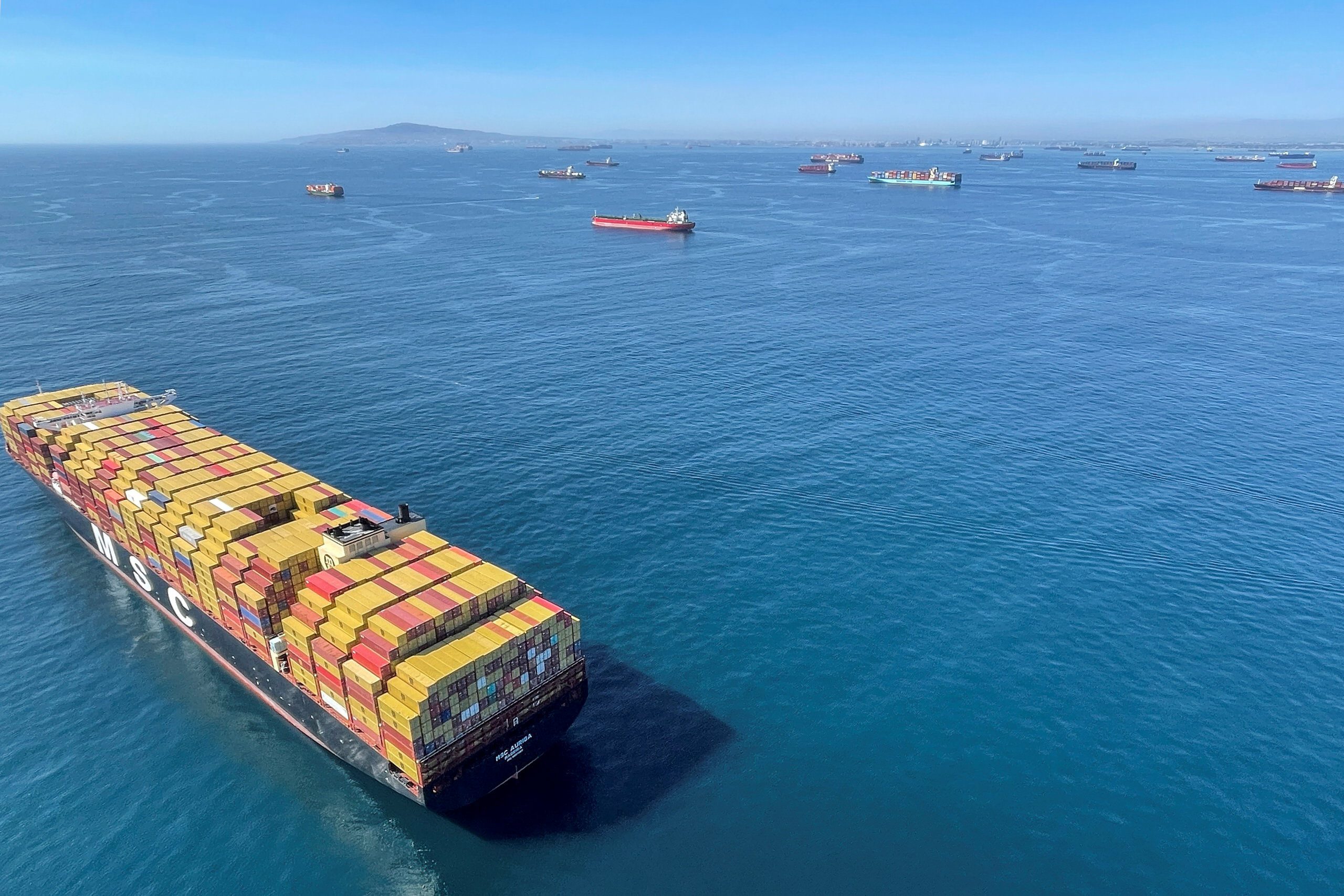U.S. Customs Revenue Tops $100 Billion for First Time Amid Tariff Surge
US revenue from customs duties this fiscal year surpassed $100 billion for the first time, reflecting higher tariffs imposed by the Trump administration.

Shipping officials in California have proclaimed the end of the container backup at the ports of Los Angeles and Long Beach after 25 months.
The backup was one of the most visible signs of supply chain chaos driven by the pandemic-fueled import boom, as dozens of ships could be seen parked at San Pedro Bay anchorages just off the coast.
The backup started in October 2020 as a result of insatiable consumer demand for imported goods in the early months of the pandemic. By February 2021, it swelled to 42 ships before dropping back down to 9 a few months later. But as peak shipping season began to ramp up, the backup continued to grow steadily through the end of last year before peaking this past January at 109 ships.
Since then, the backup has been reduced fairly steadily as imports have slowed and people have shifted back to services, reaching single digits in the last month. You can see the backup in the chart below in grey:

“After 25 months, and with concurrence of the Ports of Los Angeles and Long Beach, the Pacific Maritime Association (PMA), and the Pacific Merchant Shipping Association (PMSA), the container ship backup for the ports of Los Angeles and Long Beach has ended,” the Marine Exchange of Southern California said in a Facebook post on Wednesday.
In November 2021, the PMA, PMSA, and Marine Exchange introduced a new queuing process to improve safety and air quality off of Southern California. The updated system essentially established a “Safety and Air Quality Area” extending 150 miles from the coast that inbound trans-pacific containerships are requested to avoid while waiting for berth at the ports. It also changes how ships have historically entered the berthing queue.
Under the old system, ships essentially got their place in line when they arrived within 20 nautical miles from the San Pedro Bay Port Complex. But the new system calls for each vessel to be assigned a place in the arrival queue based on their departure time from their last port of call, allowing vessels to “slow steam” across the Pacific— a strategy that the shipping industry has often embraced as a means of reducing fuel consumption and carbon emissions.
Despite critics, the system was successful at accomplishing its goals of boosting safety by spacing ships out further out at sea, as opposed to designated anchorages or tight loitering areas, and improving air quality in Southern California by drastically reducing the number of vessels idling near major metropolitan areas.
In one notable incident, a large MSC containership dragged its anchor over a well-known and charted pipeline, resulting in an oil spill that foiled vast stretches of nearby beaches. Although the oil spill was first reported in early October 2021, investigators determined that the initial anchor dragging incident took place months earlier during a heavy weather event in January 2021, during which half of the 50 ships at anchorages at the time went to sea for storm avoidance.
“My VTS watch is breathing a sigh of relief tonight as were are 22 fewer vessels loitering in our waters tonight than last week, reducing risk of an incident as await the strong Santa Ana wind event during the next 48 hours,” said Captain Louttit, Executive Director of the Marine Exchange, in the week after the new queuing system was put in place.
Captain Louttit and his team at the Marine Exchange, which assists in the safe navigation of vessels approaching the ports, must really be relieved today.
“Pretty amazing the backup is over after 25 months. Thanks to all who cleared the backlog, the PMSA/PMA led Industry Working Group that designed the new voluntary queuing system for labor, and the ocean carriers for voluntarily complying,” said Captain Louttit. “The Marine Transportation System continues to be safe, secure, efficient, reliable, and environmentally sound due to all port partners continuing to work together in an exemplary manner 7/24/365.”
But as the Southern California backup ends, we’re seeing backups build in places like Houston, Savannah and New York as East and Gulf Coast ports are picking up a greater share of U.S. imports, prompted by importers shifting cargo to avoid potential problems associated with unresolved labor negotiations at West Coast ports. Now with a potential rail strike looming, it will be interesting to see if Southern California’s backup is set for a return or gone for good. Another issue… long wait times at the Panama Canal.

Subscribe to gCaptain Daily and stay informed with the latest global maritime and offshore news


Stay informed with the latest maritime and offshore news, delivered daily straight to your inbox
Essential news coupled with the finest maritime content sourced from across the globe.
Sign Up